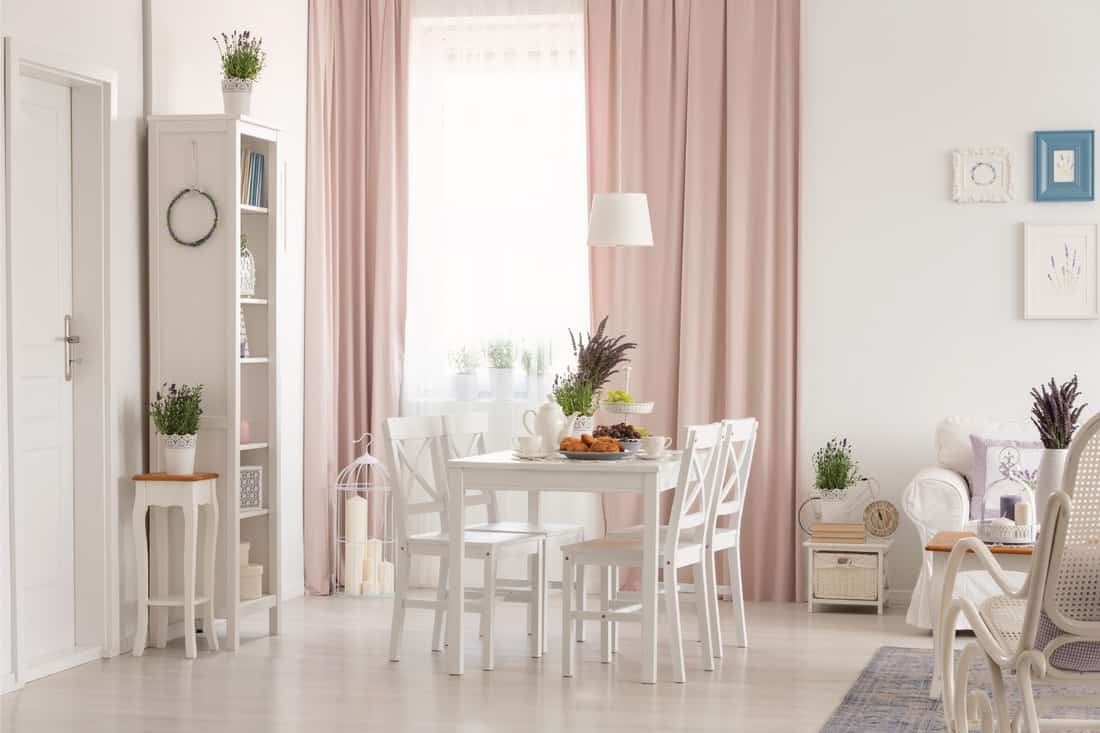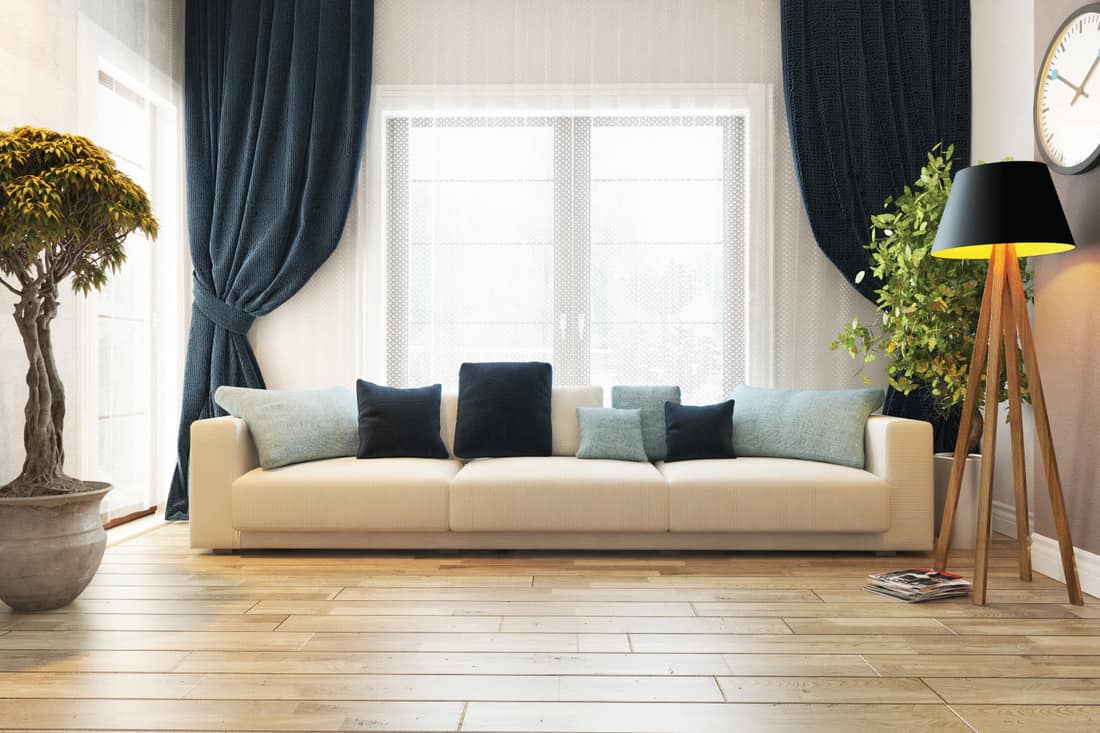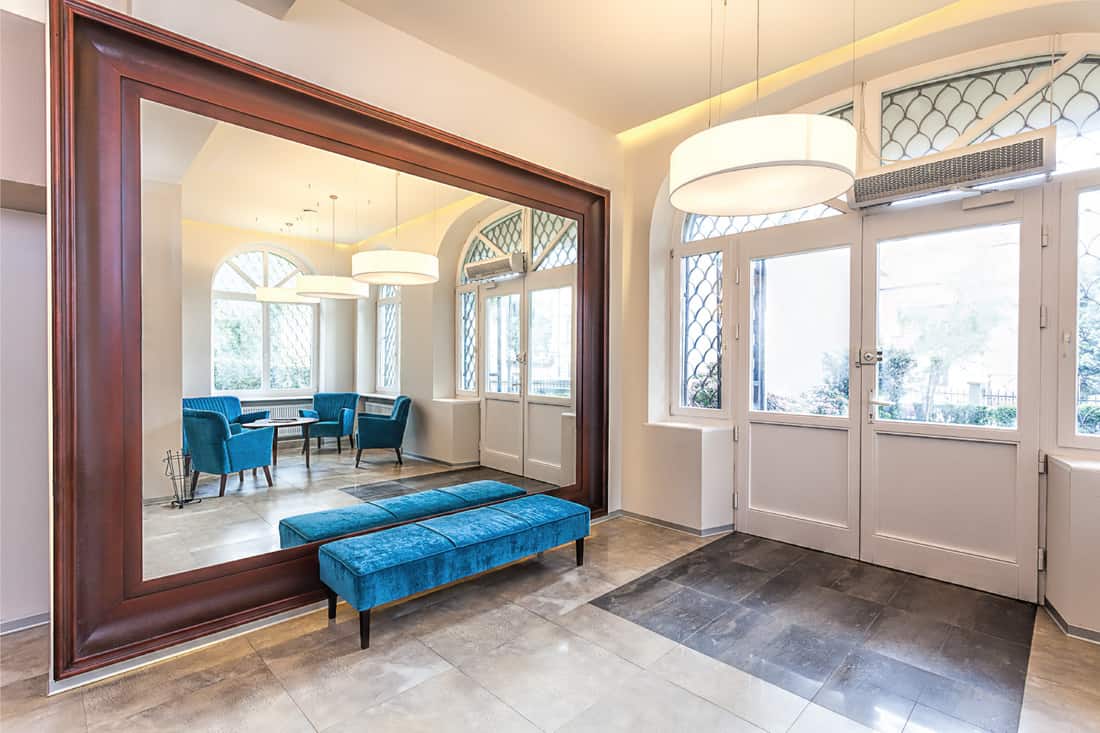Doors are a cornerstone of every building, both inside and out. They are the best way to divide up rooms, help cancel noise, and offer a modicum of privacy. However, some doorways do not have doors attached to them. If you're a renter, you might still want a door cover, but how can you do that? A little research helped reveal some truly awesome choices.
There are several ways to cover up doorways without having to go for a door installation. Some of the more popular choices include:
- Beaded Curtains
- Heavy Curtains
- Accordion Dividers
- Ropes
- Screen Dividers
- Roman Blinds
Each door covering option above has its own perks and pitfalls, and if you want to keep your home looking as stylish as it can be, you will need to be well-acquainted with what can be done. This guide is here to help!
![Japanese home with traditional screen dividers and small furnitures, How To Cover A Doorway Without A Door [6 Awesome Ideas!]](https://homedecorbliss.com/wp-content/uploads/2020/11/japanese-home-with-traditional-screen-dividers-and-small-furnitures-how-to-cover-a-doorway-without-a-door-6-awesome-ideas-683x1024.jpg)
How Do You Divide A Room Without A Door?
Ah, doorless entryways. They can symbolize a lot of opportunities when it comes to decorating. This is also true when you're just looking for a way to divide your rooms. Knowing that, it's good to take a look at each method before you select one.
Beaded Curtains
Beaded curtains are a common go-to choice for teenage rooms, but did you know that this option can also work in the right adult's room too? It's true! Beaded curtains are an excellent way to divide closets and add a bohemian touch to your home, all while promoting a more open look to your room.
Unlike most other options on this list, this does not offer much in terms of soundproofing or privacy. So, keep that in mind when you're choosing this option.
Click here to get these beaded curtains.
Heavy Curtains

Often the most cost-effective and privacy-enforcing options on this list, heavy curtains help dampen sound and keep out nosy eyes. A good pair of curtains can help keep doorways discrete and increase the room's visual size. To make a small room larger, use white or light-colored curtains rather than dark-colored.
Curtains are a nearly-universal option when it comes to style. No matter what kind of aesthetic you end up choosing, you will be able to find a curtain look that works for you.
Click here to get heavy curtains from Amazon.
Accordion Dividers
Now, we're starting to get a more retro look. Accordion dividers are a very 1960s, 1970s type of thing. They are primarily made from wood, plastic, or a papery material, but sometimes, you can find them made out of solid fabric too. Their often-rustic appearance makes them perfect for people who love midcentury modern styles and decor that offers an earthy look.
Ropes
Call it rope dividers, call it macrame, but whatever you choose to nickname it, it's making a comeback. This unique take on the old-fashioned beaded curtain keeps things bohemian but adds a more global touch to it. It works well with homes that have a Middle Eastern flair as well as a Southwestern twist.
Screen Dividers

Screen dividers have been a traditional way to offer privacy through entryways throughout Japan's history. Unsurprisingly, the way they offer privacy but let in light make them very popular with top designers today. This is a simple way to add a hypermodern (or traditional Japanese) touch to any room.
Don't be shocked when you see updated, Americanized versions of these online. They're called sliding screen panels, and they are perfect for modern and contemporary homes. Right now, they're not well-known but expect that to change. It's a trend that is bound to catch on sooner rather than later.
Click here to get a sliding screen panel from Amazon.
Roman Blinds
Roman blinds aren't just for French door curtains, you know! These highly utilitarian covers are ideal for homes that involve a contemporary modern look. They are easy to install, help make your room look larger, and help usher in natural lighting if you have it streaming in from another room. Simply put, it's understated elegance.
Do You Have To Have A Door On A Bedroom?
This all depends on how you want to define a "bedroom." If you are just talking about having a room with a bed that you can have guests spend the night in, then you don't have to have a door on the bedroom. As long as you give your guests some semblance of privacy, you should be alright.
However, if you're talking about the official definition in real estate terms, you will need to have a door on the bedroom. In many (if not most) parts of the nation, local building codes will demand that you have a real door as part of your bedroom's build. Not having them can be a code violation.
Do You Have To Have A Door On A Bathroom?
In most parts of the United States, it would violate building codes not to have a door on your bathroom. Besides, the door will help keep moisture from leaking out into the rest of your home and also offers up some privacy. For the sake of everyone's comfort in your home, please get a bathroom door!
How Do You Hide An Unused Door?
Let's say that you have a room that you don't use for one reason or another. Or maybe, you just don't want guests randomly walking in without you knowing. You will need to find a way to hide your door, and thankfully, there are several ways to do that, which can also be used to cover a doorless entryway.
Use A Hidden Door
Yes, it's true! The bookcase doors that you've seen in Scooby-Doo are very real. They are called Murphy doors and double as shelving units. Since they're so subtle, they are one of the easiest ways to hide a room that you want to stay private. These technically do use a new door installation to hide your door, but it's still a remarkably good choice for people who want to totally obscure the door.
Hang Curtains Over The Door

Though curtains are often used to just block off an entryway, they can also obscure a room altogether when hung properly. It's all about the technique you use to hang them. When trying to hide a door, it's best to block off most of a wall, like in the photo above.
Hang A Mirror Or Poster Over It

Sometimes, you really want to just hide it altogether, without having to install a secret passageway in your home. It happens, and when it does, there's an easy way to make sure no one sees the door you don't use. It's possible to get large, floor-to-ceiling mirrors that are capable of spanning a fair portion of your room. Hiding the door behind one of these is a cinch.
The good thing about using mirrors as a way to hide a door is that you get to enjoy the room-expanding aspect of mirrors. Mirrors also offer a way to reflect light, which can add to your home's ambiance.
Use Wall Panels
If you are looking for a full-blown way to hide the door, then wall panels that cover the entirety of the wall can help. With this option, you can "brick over" the door entirely. Or, you remove the doorknob and cover the door with a movable panel part. Since this option makes it easy to cover your walls with wallpaper, the panel can act as an excellent focal point for your room's setup.
Conclusion
When it comes to hiding entryways or just giving some privacy to your house guests, doors are the standard option. However, that doesn't mean that it's the only option you have to consider. Interior design is all about using your creativity to maximize your space, and that means the sky is the limit.
If doors aren't your thing, you can always choose curtains. Or wall panels. Or, maybe if you're feeling the Brady Bunch house's look, you could use accordion dividers. As long as the curtain works with your particular aesthetic, you will be able to get the results you want.



